Discover the fascinating survival strategy of elephant herds—bunching behavior. From protecting calves against predators to symbolizing deep family bonds, bunching showcases the intelligence and unity of elephants. However, threats like poaching and habitat loss disrupt these vital instincts, underscoring the need for conservation. Explore these majestic creatures with Kijani Tours and witness their intricate social dynamics firsthand. Embrace responsible tourism and connect with the heart of nature's narrative.
Mount Kilimanjaro Mysteries: Captivating Facts That Will Amaze You
Facts About Mount Kilimanjaro takes readers on an inspiring journey into the wonders of this iconic peak. As the world's tallest free-standing mountain, Kilimanjaro captivates with its towering height of 5,895 meters and unique volcanic cones—Kibo, Mawenzi, and Shira. The mountain's diverse ecosystems showcase five climate zones, from lush rainforests to icy arctic conditions, supporting rich biodiversity and endemic species. The melting glaciers highlight the urgent impact of climate change, while Kilimanjaro's cultural significance for the Chagga people adds a profound layer of heritage and spiritual importance. Climbers can explore its seven trekking routes, each offering distinct challenges and unforgettable experiences. Recognized as a UNESCO World Heritage Site since 1987, Kilimanjaro stands as a global treasure of ecological, cultural, and geological wonder, inspiring admiration and a call to action for its preservation.
1. Tallest Free-Standing Mountain
Kilimanjaro holds the title of the tallest free-standing mountain globally, distinguished by its independence from any mountain range. It rises to an impressive height of 5,895 meters (19,341 feet) above sea level.
2. Three Volcanic Peaks
Kilimanjaro is an incredible natural wonder, made up of three majestic volcanic cones: the towering Kibo, which is the highest and currently dormant, the striking Mawenzi, and the impressive Shira. While Mawenzi and Shira are no longer active, Kibo still holds a thrilling potential for future eruptions.
3. The forested area of Mount Kilimanjaro
The forested area of Mount Kilimanjaro, covering about 1,000 square kilometers, is a vibrant ecosystem that plays a crucial role in supporting diverse wildlife and regulating the water cycle. This lush region, part of Kilimanjaro National Park, is essential for biodiversity and serves as a natural boundary between the mountain's rainforest and its higher, drier zones. As one of the mountain's defining features, these forests not only enhance the area’s ecological value but also provide vital resources, including water, to communities in the lower slopes making them indispensable to both nature and human life.
4. Seven Summits
It’s one of the incredible "Seven Summits" — the tallest peaks on every continent! Climbing it is a dream for adventurers around the globe, and it’s a thrilling goal that inspires so many.
5. Five distinct climate zones
Mount Kilimanjaro is an extraordinary example of biodiversity, featuring five unique climate zones corresponding to its height. The journey begins in tropical rainforests at the base, filled with rich vegetation and diverse wildlife. As climbers progress, they encounter heath and moorland, then transition to the stark beauty of alpine desert landscapes. Finally, the summit presents arctic conditions with freezing temperatures and glaciers, creating a dramatic contrast to the warmer lower regions. This variety allows climbers to experience a remarkable spectrum of ecosystems, highlighting Kilimanjaro as both a physical challenge and a captivating exploration of nature's diversity.
6. Mount Kilimanjaro Glaciers
The glaciers of Mount Kilimanjaro, a significant feature of Africa's tallest mountain, are rapidly melting due to climate change. As global temperatures rise, the iconic ice fields, present for thousands of years, are at risk of disappearing completely within decades. This loss would not only change the mountain's scenic beauty but also affect local water supplies and ecosystems that rely on the ice. The retreat of Kilimanjaro's glaciers highlights the severe impacts of climate change and the urgent need for action to protect such natural treasures.
7. The average temperature at the summit of Mount Kilimanjaro
The summit of Mount Kilimanjaro, also known as Uhuru Peak, experiences extreme and frigid conditions due to its high altitude of 5,895 meters (19,341 feet). The average temperature at the summit ranges between -7°C (19°F) and -29°C (-20°F), depending on the time of year and weather patterns. These freezing temperatures contribute to the iconic ice caps and glaciers found at the peak, although they have been receding over the years. Climbers must prepare for these harsh conditions, as the thin air and icy environment present significant challenges, making proper gear and acclimatization essential for a successful ascent.
8. Cultural Significance
Mount Kilimanjaro is not just a breathtaking natural wonder for the Chagga people; it is a vital symbol of their cultural heritage and history. The mountain is intricately linked to Chagga folklore, signifying creation and providing essential resources like fertile land and water for agriculture. The Chagga employ traditional irrigation systems called Mfongo to enhance their farming. Along Kilimanjaro's slopes, sacred sites allow the community to engage in rituals for blessings and protection. This magnificent peak inspires both admiration and pride, cementing its essential role in the Chagga's identity and their lasting connection to the land.
9. Mount Kilimanjaro climbing routes
Mount Kilimanjaro presents an exciting array of trekking routes that cater to climbers of all abilities. The Marangu Route, known as the "Coca-Cola Route," is perfect for novices due to its hut accommodations and gentler ascent. For those seeking more of a challenge, the Machame Route, or "Whiskey Route," offers stunning views and diverse terrains. The Lemosho Route stands out for its breathtaking beauty and acclimatization benefits. Other distinctive choices include the quieter Rongai Route and the steep Umbwe Route, which is meant for seasoned climbers craving intensity. With seven main routes—including Marangu, Machame, Lemosho, Rongai, Shira, Umbwe, and the Northern Circuit—plus the Mweka Route for descent, Kilimanjaro guarantees an unforgettable adventure across its enchanting climates, from vibrant rainforests to stark alpine deserts, culminating at its iconic icy peak.
10. The origin of the word Kilimanjaro
The name "Kilimanjaro" holds a bit of mystery, with several theories about its origin. Many scholars suggest it combines words from local languages, with "Kilima" possibly meaning "mountain" in Swahili and "Njaro" referring to "whiteness" or "shining" in Chagga, likely alluding to the mountain's snow-capped summit. Others propose a connection to an ancient spirit linked to the mountain. While the exact roots may remain uncertain, "Kilimanjaro" beautifully reflects the grandeur of this iconic African peak and the rich cultural heritage of its surroundings.
11. The largest volcanic cone
Kibo is the largest of Mount Kilimanjaro's three volcanic cones, with a diameter exceeding 15 miles (24 kilometers). It features Uhuru Peak, the highest point in Africa at 5,895 meters (19,341 feet). Unlike the other cones, Mawenzi and Shira, Kibo is classified as dormant, indicating a possibility for future eruptions. Its expansive crater and snow-capped summit make Kibo a striking element of Kilimanjaro, attracting both climbers and scientists intrigued by its stunning landscapes and rich geological significance.
12. Wildlife Diversity
Mount Kilimanjaro, with its incredible biodiversity, is a paradise for wildlife lovers and researchers. On its lower slopes, you can spot majestic elephants and elusive leopards, while the vibrant forest canopies burst with various bird species, creating a colorful spectacle. The lively colobus monkeys and fascinating alpine insects, like the Saltatoria species, contribute to this rich ecosystem. This highlights Kilimanjaro's ecological significance and the urgent need for conservation efforts to protect its unique habitats for future generations. Together, we can safeguard this extraordinary natural treasure!
13. UNESCO World Heritage Site
Mount Kilimanjaro, a UNESCO World Heritage Site since 1987, is renowned for its ecological importance and breathtaking landscapes, making it a vital sanctuary teeming with diverse ecosystems, from lush rainforests to icy peaks. As Africa's tallest mountain, Kilimanjaro is home to unique flora and fauna, including the giant groundsel and the rare Abbott’s duiker. Its striking volcanic formations and snow-capped summit attract adventurers and nature enthusiasts, highlighting the global appreciation for its beauty and the urgent need to protect its extraordinary biodiversity for future generations.
In summary, Mount Kilimanjaro is a majestic natural wonder, renowned as the tallest free-standing mountain in the world. Its striking volcanic cones and diverse ecosystems draw adventurers and researchers alike, while its melting glaciers highlight the pressing issue of climate change. The vibrant forests and unique wildlife showcase the mountain's ecological importance. As a destination for climbers and a cultural treasure, Kilimanjaro inspires awe and emphasizes the need for preservation efforts, ensuring its legacy endures for generations to come. More than just a mountain, it stands as a beacon of natural and cultural splendor that captivates the imagination.
Unlock More Insights
The Great Migration is a breathtaking event in nature, with over 1.5 million wildebeests, zebras, and gazelles traversing the Serengeti-Mara ecosystem. Each year, these animals confront the perilous Mara River, home to hungry crocodiles, where hesitation mixes fear with survival instinct. The migration is driven by seasonal rains that dictate grazing availability, underscoring the delicate balance of the ecosystem, with predators like lions playing a crucial role in this dynamic. As wildebeests...
The Serengeti-Mara ecosystem in Northern Tanzania and Southwestern Kenya is home to the spectacular Great Migration of wildebeests, an awe-inspiring journey of over 650 km each year! Starting from the Masai Mara and ending in Ndutu during the calving season, this migration is a breathtaking natural event that enriches the entire ecosystem. As wildebeests graze on grass, they fertilize the soil and support a rich diversity of life while preventing overgrazing. Their...

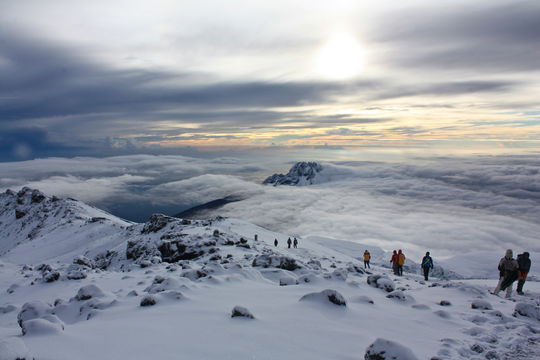
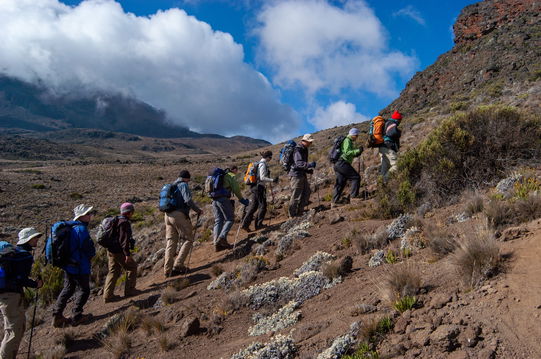
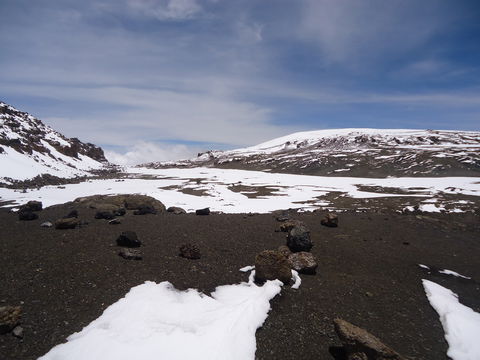
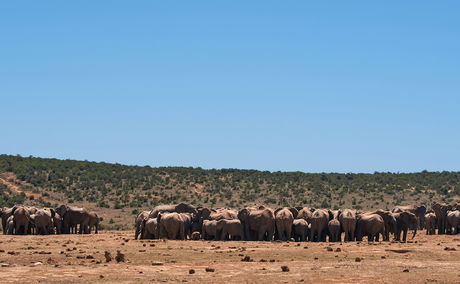
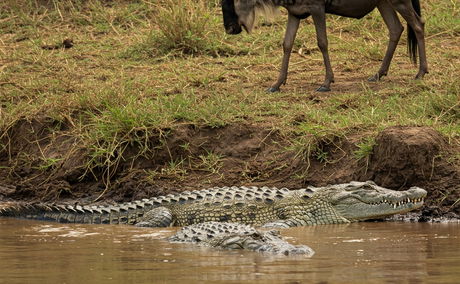
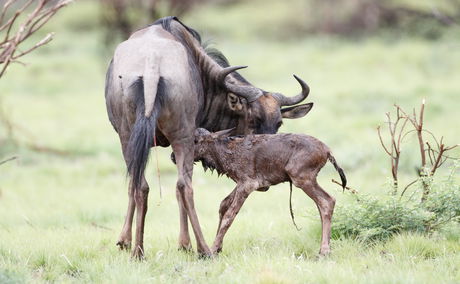
Share This Post